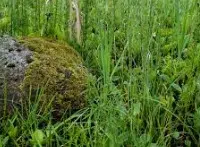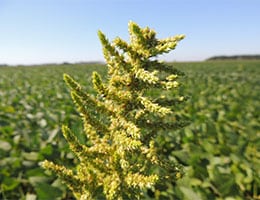 According to the first meaning detailed by the Royal Spanish Academy ( RAE ) in its dictionary, undergrowth is the thickness that is generated from an agglomeration of bushes . The most common use of the term, however, refers to the proliferation of weeds .
According to the first meaning detailed by the Royal Spanish Academy ( RAE ) in its dictionary, undergrowth is the thickness that is generated from an agglomeration of bushes . The most common use of the term, however, refers to the proliferation of weeds .
Weeds are called weeds, therefore, to the group of herbaceous plants that appear spontaneously in lands where crops are grown. This weed makes it difficult for species cultivated by humans to grow normally.
In a broad sense, all plants that grow wild in land controlled by people , such as a garden, an orchard or a field intended for agriculture, are classified as weeds. Because weeds consume resources (nutrients), take up space and restrict light , they threaten the well-being of crops.
It is important to keep in mind that a plant can be considered a weed in one place but not receive this designation in another. To be a weed, it must arise in an unwanted location and interfere with human activity.
Weeds cause a decrease in fertilization efficiency, increase irrigation costs, obstruct harvesting processes and can harbor pathogens and insects. It is estimated that it causes the loss of up to 10% of agricultural production .
According to specialist calculations, 0.1% of the global flora corresponds to weeds. The science focused on the study of these plants is known as weeds , a discipline of great importance given the impact of weeds on the economy.
People who are dedicated to maintaining their gardens or plantations know that weeds are an enemy that they must always fight against: they grow at a much faster speed than the rest of the plants and take advantage of any neglect to sprout. However, this does not mean that there is no way to combat it; On the contrary, there are many methods to eliminate it and, perhaps more importantly, prevent its appearance.
Measures to prevent weeds should begin before planting itself. In this initial phase we must till the soil properly, removing all the rhizomes, bulbils and stolons by hand .
 If we want to plant grass, for example, it is recommended to water abundantly and, after a few days, spray the grass that has grown with a very powerful product. After fifteen days of continuing to water, we must treat the soil again with the same herbicide. In this way, the amount of weed will be negligible and easy to control.
If we want to plant grass, for example, it is recommended to water abundantly and, after a few days, spray the grass that has grown with a very powerful product. After fifteen days of continuing to water, we must treat the soil again with the same herbicide. In this way, the amount of weed will be negligible and easy to control.
On the other hand, we have the anti-grass mesh , a very effective product to protect bushes, rockeries, cacti and even for use on gravel paths. Its use consists of fixing it to the ground to prevent the growth of weeds. To prevent this from ruining the aesthetics of the garden, it can be covered with bark or small stones.
It is also possible to use groundcover plants , which form a kind of dense carpet that does not allow the proliferation of weeds.
Watering bare soil is not a good practice; On the contrary, it is necessary to use water only where our plants are. To minimize irrigation in unwanted areas, we can use tools that limit the flow of water.
As soon as we detect weeds, the first thing we should do is pull it out before it blooms, to prevent it from releasing seeds. If it is a very strong species or with stems that can hurt us, it is recommended to use special gloves for weeding. Larger and more robust weeds can be removed with the help of tools such as a hoe.
